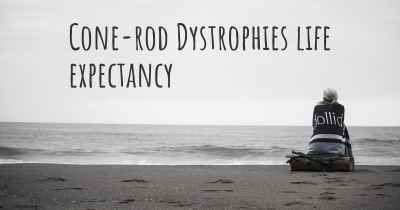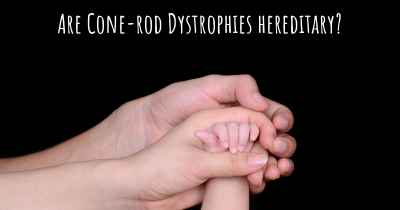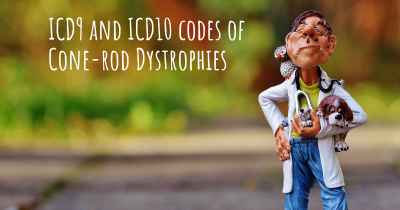Which are the worst symptoms of Cone-rod Dystrophies?
See the worst symptoms of affected by Cone-rod Dystrophies here

Cone-rod dystrophies (CRDs) are a group of inherited eye disorders that primarily affect the light-sensitive cells in the retina called cones and rods. These cells are responsible for capturing and transmitting visual information to the brain, enabling us to see and perceive the world around us. CRDs are characterized by progressive degeneration of these cells, leading to vision loss and impairment.
While the severity and progression of symptoms can vary among individuals, there are several common manifestations of CRDs that significantly impact a person's visual function and quality of life.
1. Visual Acuity Loss:
One of the most prominent symptoms of CRDs is the gradual decline in visual acuity. Visual acuity refers to the sharpness and clarity of vision, particularly when focusing on fine details. As the disease progresses, individuals with CRDs experience difficulty in reading, recognizing faces, and performing tasks that require precise vision.
2. Color Vision Deficiency:
Another hallmark symptom of CRDs is color vision deficiency. Cones, the cells responsible for color perception, are primarily affected in CRDs. As a result, individuals may have difficulty distinguishing between different colors or experience a loss of color vision altogether. This can greatly impact their ability to appreciate and navigate the colorful world around them.
3. Photophobia:
Photophobia, or extreme sensitivity to light, is a common symptom experienced by individuals with CRDs. Bright lights, sunlight, or even normal indoor lighting can cause discomfort, eye pain, and excessive squinting. This sensitivity can significantly limit their ability to engage in outdoor activities or be exposed to well-lit environments.
4. Reduced Contrast Sensitivity:
CRDs often lead to a decline in contrast sensitivity, which refers to the ability to distinguish between objects of similar tones or shades. Individuals may struggle to perceive subtle differences in brightness, making it challenging to navigate in low-light conditions or distinguish objects from their background.
5. Central Vision Loss:
As CRDs progress, individuals may experience central vision loss. This means that the central part of their visual field becomes blurry or completely obscured. Activities that require detailed central vision, such as reading, driving, or recognizing faces, become increasingly difficult or impossible.
6. Peripheral Vision Loss:
In addition to central vision loss, CRDs can also cause peripheral vision loss. This means that the outer edges of the visual field become progressively narrower, leading to tunnel vision. Peripheral vision loss can greatly impact mobility, orientation, and awareness of the surroundings.
7. Nystagmus:
Nystagmus is an involuntary, rhythmic movement of the eyes. It is often observed in individuals with CRDs and can further impair visual function. Nystagmus can cause constant or intermittent oscillation of the eyes, leading to blurred vision and difficulty focusing on objects.
8. Night Blindness:
Night blindness, or nyctalopia, is a common symptom of CRDs. It refers to the inability to see clearly in low-light conditions or at night. Individuals may experience extreme difficulty navigating in dimly lit environments, leading to increased dependence on artificial lighting.
It is important to note that the progression and severity of these symptoms can vary significantly among individuals with CRDs. Some individuals may experience a slower decline in vision, while others may rapidly lose their visual function. Additionally, the specific symptoms and their impact can be influenced by the particular subtype of CRD an individual has.
While there is currently no cure for CRDs, early diagnosis, regular eye examinations, and appropriate management can help individuals with CRDs optimize their remaining vision and maintain their quality of life. Low vision aids, visual aids, and assistive technologies can also play a crucial role in enhancing independence and facilitating daily activities for those affected by CRDs.
Colour blindness
high myopia
light sensitivity
Posted Aug 10, 2018 by Shel 400








